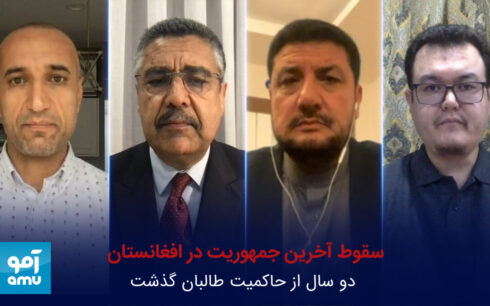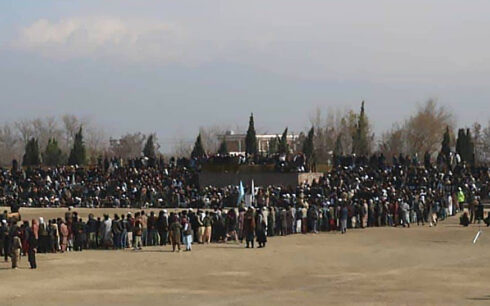On August 2, 2021, former president Mohammad Ashraf Ghani convened a special joint session of the Afghanistan parliament to discuss “the survival strategy” of the republic, but unbeknown to him, his administration had only 13 days left in power.
In a poignant address, Ghani issued a stern warning to the Taliban, asserting that they would have to come to the negotiating table humbly or face the consequences on the battlefield. However, even as this warning resonated, 46 districts fell to the Taliban on the same day, underscoring the escalating challenges the government was grappling with.
“My commitment to you and the people of Afghanistan is that I will not kneel before any destructive sword, either we will sit knee-to-knee at the real negotiating table, or we will break their knees on the battlefield,” Ghani said on August 2, 2021.
August 2, 2021, was marked by intense battles in the cities of Herat and Lashkargah as they defended against heavy attacks launched by the Taliban. Informed sources revealed that the United States, despite facing difficulties, agreed to conduct airstrikes in support of the former government’s forces in Helmand province.
The total number of districts under Taliban control on August 2 was 243 – which was testimony to the grim reality of the situation on the ground.
Throughout the uncertain times leading up to the government’s eventual collapse, Ghani’s resolve to protect the republic remained unwavering. Relying on the military power of the government and the commitment of the international community, particularly the United States, Ghani vowed not to capitulate to destructive forces.
The situation was fraught with concerns, and some experts even viewed the situation as a planned surrender, emphasizing the importance of a nuanced approach to the evolving events. Kamawal Jalili, a military affairs analyst, suggested that characterizing the developments as a “surrender and handover” rather than a collapse might offer a more accurate perspective, given the brave efforts of Afghanistan’s armed forces in defending their land and country.
In Herat, former Jihadi leader Ismail Khan took up arms once again and valiantly defended his hometown despite facing challenges due to limited facilities and weapons.
As Kabul inched closer to its fall, daily activities in the city became fraught with apprehension. Residents, including journalists like Nusrat Mansour, experienced heightened security concerns as the space grew constrained and uncertainty loomed.
“These concerns increased both in terms of security, because the space was completely cramped, and also in terms of spirit, because we were in a rush, we didn’t understand what was going to happen,” said Mansour.
Fawzia Saeedzada, a women’s rights activist, expressed the difficulties posed by provincial insecurity, assassinations of journalists, and the threat of magnetic IEDs in Kabul, hampering work, and civil activities.
“Insecurity in provinces, assassinations of journalists, and magnetic bombs in Kabul made it impossible for us to get to work from home, and to continue our political, social, and civil activities,” said Saeedzada.
In August, the support of American forces to the previous government’s security forces witnessed a significant decrease, as informed sources noted. The US military focused its airstrikes on providing support to the security forces in particularly challenging and unique situations.





